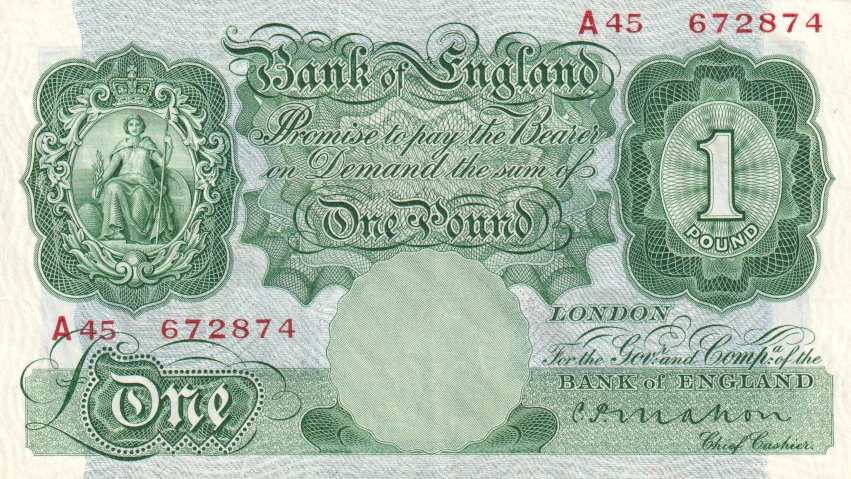The British £1 banknote holds a special place in the history of currency in the United Kingdom. For centuries, it has been a symbol of value, resilience, and change. In this article, we will take a fascinating journey through time, exploring the evolution and history of the British £1 banknote.
The Early Days (17th-18th Century)
The concept of banknotes emerged in England during the late 17th century. The first banknotes were handwritten promises to pay the bearer a sum of money, issued by private banks and goldsmiths. These early banknotes were not standardized in design or value and were often quite unreliable.
The Bank of England (1694)
The turning point in the history of British banknotes came with the establishment of the Bank of England in 1694. The Bank of England began issuing its own notes, initially handwritten and later printed. These early banknotes featured intricate designs, including portraits of notable figures and allegorical representations.
The Reign of the Gold Standard (19th Century)
During the 19th century, Britain adopted the gold standard, linking the value of its currency to a fixed amount of gold. This period saw the issuance of £1 banknotes backed by gold reserves held by the Bank of England. These notes were large and ornate, with detailed illustrations and complex security features to deter counterfeiting.
The 20th Century: War and Change
The 20th century brought significant changes to the British £1 banknote. During World War I, the government issued Treasury notes to finance the war effort, including £1 notes. These notes featured more straightforward designs and were smaller in size.
The Emergency Issue of 1940
As World War II raged on, the threat of German invasion prompted the issuance of the Emergency £1 banknote in 1940. This note was distinctive for its blue color and lack of a portrait, featuring a stylized design instead. It was a response to the fear that, if Britain fell to the Nazis, the existing banknotes could be rendered worthless.
Post-War Period and the Introduction of the Pound Coin (1970s-1980s)
After World War II, the British economy underwent significant changes, including decimalization in 1971 when the pound was divided into 100 new pence. With the introduction of the pound coin in 1983, the role of the £1 banknote started to diminish.
The Final Farewell (1988)
The £1 banknote was officially withdrawn from circulation in England and Wales in 1988, although it continued to be used in Scotland and Northern Ireland for some time. It was replaced by the £1 coin, which featured the iconic design of the Royal Coat of Arms.
Scotland and Northern Ireland: Unique £1 Notes
While the £1 banknote disappeared from circulation in England and Wales, it continued to be printed in Scotland and Northern Ireland. These notes are issued by different banks, such as the Royal Bank of Scotland, Clydesdale Bank, and Bank of Ireland, and are considered legal currency alongside the pound coin.
Modern Times: Collectibles and Nostalgia
Today, the £1 banknote has become a collectible item, with some notes from earlier periods fetching high prices among numismatists and collectors. It serves as a nostalgic reminder of the past, a testament to the ever-evolving landscape of British currency.
Conclusion
The history of the British £1 banknote reflects the dynamic nature of currency and the enduring legacy of British financial institutions. From handwritten promises to the sleek and durable pound coin, the £1 note has seen it all. While it may have vanished from everyday transactions, its legacy lives on in the hearts of collectors and those who remember its role in the not-so-distant past.

